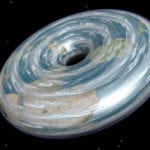 Humans
Humans  Humans
Humans  Technology
Technology 10 Shocking Secrets Tech Giants Tried to Hide
 Politics
Politics Laughable Leaders: 10 Funny Presidential Moments
 Books
Books 10 Middle-Earth Tales Worth Adapting
 History
History 10 Notable Events That Also Occurred on September 11
 Music
Music Top 10 Famous Songs You Didn’t Know Were from Musicals
 Miscellaneous
Miscellaneous 10 Lifehacks That Turn Waste into Gold
 Crime
Crime Top 10 TV Movies from the ’90s Inspired by Real-Life Murder Cases
 Technology
Technology 10 Technology Shifts That Are Making People Uneasy
 Movies and TV
Movies and TV 10 Actors Who Totally Forgot Their Most Iconic Roles
 Humans
Humans 10 Beautiful Examples of Extreme Endurance
 Technology
Technology 10 Shocking Secrets Tech Giants Tried to Hide
 Politics
Politics Laughable Leaders: 10 Funny Presidential Moments
Who's Behind Listverse?

Jamie Frater
Head Editor
Jamie founded Listverse due to an insatiable desire to share fascinating, obscure, and bizarre facts. He has been a guest speaker on numerous national radio and television stations and is a five time published author.
More About Us Books
Books 10 Middle-Earth Tales Worth Adapting
 History
History 10 Notable Events That Also Occurred on September 11
 Music
Music Top 10 Famous Songs You Didn’t Know Were from Musicals
 Miscellaneous
Miscellaneous 10 Lifehacks That Turn Waste into Gold
 Crime
Crime Top 10 TV Movies from the ’90s Inspired by Real-Life Murder Cases
 Technology
Technology 10 Technology Shifts That Are Making People Uneasy
 Movies and TV
Movies and TV 10 Actors Who Totally Forgot Their Most Iconic Roles
Top 10 Interesting Facts Involving Very Large Numbers
This list shows off some of the incredibly large numbers involved in life and the universe that you might not be aware of. Ever wondered if there are more sand grains than insects on Earth? What about how many seconds have roughly passed since the Big Bang? Which amazing fact produces the biggest number?
Math might not be everyone’s favorite subject, but the truth is numbers are everywhere, from how many cups of coffee you drink to how much weight you bench in the gym or even how much you were ripped off when you bought your new car.
But there are some facts out there to do with numbers so fascinating that even people who detest math would be interested. Specifically, facts that involve truly gigantic numbers. Here is the list of the top 10 interesting facts involving very large numbers.
Related: Top 10 Superstitious Beliefs Involving Numbers
10 Your Billionth Second of Life

Around half the people on the planet have never known the joy of celebrating their billionth second of life. Math has proven that your billionth second is about halfway between your 31st and 32nd birthdays. For some people, this is not a massive deal, but to others, it is quite a milestone and achievement to brag that you are one billion seconds old. It makes you sound very wise.
To figure this out, you just need to do some simple math. There are 86,400 seconds in one day, which you can calculate pretty easily on your phone. Divide one billion by 86,400, and you get 11,574 which gives you the number of days one billion seconds makes up. Divide that number by 365 (the number of days in a year), and you get approximately 31.7 years. So get the date marked down in your calendar because you only turn one billion (seconds) once![1]
9 Trees on Earth vs. Stars in Our Galaxy

Millions of people love the experience of walking through a forest full of trees, but have you ever wondered how many trees there are on Earth? The number might blow you away!
As of 2023, there are over three trillion trees on Earth! That is a mighty jump from the number of humans on the planet, which is just over eight billion at the time of writing. Doing the math of three trillion divided by eight billion means that for every human alive, there would be 375 trees!
Not only that, but there are more trees on Earth than stars in our Milky Way galaxy, with at least 100 billion stars! That means that if you wanted to have the same number of stars in our galaxy as trees on Earth, then you would have to multiply all the stars in the galaxy by 30.[2]
8 Insects vs. Sand

Humans see themselves as the dominant species of the planet, but that definitely isn’t because of our quantity. For every human alive on Earth, there are about 1.4 billion insects, so if you do the math, then there are approximately 11.2 quintillion insects on the planet! That’s an 11 with 18 digits next to it.
But what about sand? Are there more than 11.2 quintillion grains of sand on Earth? As it turns out, yes. Much more! The number of grains of sand on Earth is approximately seven sextillion, which is much more than the number of insects on the planet. Imagine a 7 with 21 zeros next to it. To put this number into perspective, if you do the math of 7 sextillions divided by 11.2 quintillions, you will get 625 which is the number of sand grains for every insect on Earth![3]
7 Seconds since the Big Bang
Ever wanted to know how old the universe was to the second? Well, these experts were able to pull it off, and we now know how many seconds have passed since the Big Bang… roughly.
If the Big Bang theory is true, then the Big Bang is estimated to have occurred 13.8 billion years ago, making our universe 13.8 billion years old. After doing some complicated math, experts were able to calculate the answer of 436 quadrillion, or 436,117,076,600,000,000 seconds since the Big Bang, to be more precise. Obviously, they cannot get this down to the exact second; otherwise, I would have to keep editing this article every second of the day. But this is still an amazing thing to know.
This is a big number. However, 436 quadrillion is not bigger than the number of insects on Earth and is certainly not bigger than the number of sand grains on Earth, as I previously discussed. This is surprising since we are talking about the number of seconds since the Big Bang! But as you will see, the numbers will only get bigger from here.[4]
6 Stars in the Universe
I previously talked about how many stars are in the Milky Way galaxy. That number was big, but the number of galaxies in the observable universe is said to be more than 200 billion, so the number of stars that are in the universe is enormous!
The number of stars in the observable universe is approximately 1024, or one septillion, which is a 1 followed by 24 zeros (1,000,000,000,000,000,000,000,000). Just to put it in perspective how much bigger the number of stars in the universe is compared to the number of seconds since the Big Bang, let’s do some quick math. If we calculate one septillion minus 436 quadrillion (the number of seconds since the Big Bang), that will equal 999 sextillion, or 999,999,563,882,923,400,000,000, to be exact. This tells us how many seconds are still needed to match the number of stars in the universe.
Now, let’s divide that by 60 to turn the seconds into minutes, then divide by 60 again to turn the minutes into hours, then divide by 24 to turn the hours into days, and finish by dividing by 365 to turn the days into years. Finally, we are left with 31 quadrillion years, or 31,709,778,154,582,806 years, until the number of seconds since the Big Bang matches the number of stars in the universe.
Simply put, we have a long time to wait until that happens. [5]
5 Atoms in One Human
Did you know there are more atoms in one human being than there are stars in the observable universe! The number of stars in the universe is estimated to be one septillion, as mentioned before. But the number of atoms in one human body is estimated to be about 1027, or one octillion. Just imagine a 1 with 27 zeros next to it!
To put this number into perspective, the number of cells alone in one human is estimated to be about 30 or 40 trillion, so if we took every human on Earth, which is eight billion people, and multiplied it by 40 trillion, then potentially, depending on if everyone does have 40 trillion cells in them, there are 3.2 x 10 23, or 320 sextillion human cells on Earth, which is nothing compared to one octillion atoms in one person![6]
4 Number of Bacteria on Earth
Bacteria are everywhere—your gut, your mouth, your toilet seat, your phone. Almost everything you come across in everyday life has bacteria living on it. It’s astonishing to know that we were not always what we are today and came from bacteria-like organisms, but did you know just how many bacteria are on Earth today? Prepare yourself because it is a lot!
The number of bacteria on Earth is approximately 5 x 1030, or a 5 with 30 zeros next to it. It’s called five nonillion, and it is truly a number to be afraid of. This number is larger than the number of atoms in your body considerably. In fact, it is 5,000 times larger!
Bacteria are the oldest organisms that we have ever known, and the sheer amount of them is just astounding, especially when you realize how unaware you are of these microscopic creatures on a daily basis. You might not be able to see them, but they really are everywhere around you as you read this.[7]
3 Card Deck Number
There are 52 cards in an ordinary card deck. Obviously, when you shuffle them, you are trying to randomize the order. But did you know that the number of possible arrangements you can get from scrambling up a 52-card deck is so large that it even makes the number of bacteria on Earth look like zero in comparison!
That number is 52!
No, I’m not saying that angrily. Actually, 52 with an exclamation mark next to it means 52 factorial in math, which means we calculate 52 x 51 x 50 x 49… all the way down to 1. Every time we multiply the number like this, we produce a bigger, scarier result, and the final answer to this crazy sum is 8 x 1067 or 80 unvigintillion. Basically, imagine an 8 with 67 zeros next to it. That gives you the number of possible combinations you can get whenever you shuffle a 52-playing card deck.
This number is so unbelievably large that the configuration you get after shuffling a card deck will never have been previously seen by anyone in history and will never be seen again by anyone ever.
If we were to try to go through every possible combination, one decillion people would have to shuffle a card deck each once every millisecond for 2.5 septillion years, or 2,557,653,956,460,676,007,472,749 years, to be precise. I think it’s appropriate to assume that humans as a species will not live to last 2.5 septillion years. And there will never be one decillion people to have ever lived, so we will never see every card combination, unfortunately. [8]
2 Atoms in the Universe vs. Chess
As you would probably expect, the number of atoms in the entire universe is pretty large. The number is approximately between 1078 and 1082. Just imagine a 1 with about 80 zeros next to it. It’s obvious that the number would be this big since atoms build up everything, from rocks in space to stars to the planets and everything on those planets, but what is truly incredible is that this is nothing when it comes to chess!
If you play chess correctly, the number of different ways the pieces can be arranged is about 1040. This is definitely a big number. However, if you allow illegal moves and let the pieces move wherever they want, then the number accelerates all the way up to 10123, or a 1 with 123 zeros next to it! This number is monstrous and bigger than anything I have mentioned so far.
To reach this number, you would have to take the number of atoms in the universe, which is roughly 1080, and then multiply it by 10 tredecillion, which is a number that is already monstrously bigger than the number of stars in the universe, seconds since the Big Bang, and atoms in one human combined. After all this, I think there is no other appropriate time to say… Checkmate.[9]
1 Rubik’s Cubes
But then we have this. I think a large percentage of people have heard of the massive number of different ways you can arrange a Rubik’s cube. If you don’t know, the answer is there are 43 quintillion ways that you can arrange a Rubik’s cube. That is pretty big, but did you know you can get different-sized Rubik’s cubes with more moving parts? Some of them will make any mathematician hide under their bed!
The normal Rubik’s cube is a 3x3x3 cube since it has three cube pieces going along the x-axis, the y-axis, and the z-axis. However, you can purchase 4x4x4 cubes or even 5x5x5 cubes. In fact, you can go all the way up to 12x12x12 if you wish! This is where the number of possible ways to arrange Rubik’s cubes starts skyrocketing at an unfathomable rate.
A 7x7x7 Rubik’s cube has 1.9 x 10160 ways to arrange it. Just imagine a 1 with 160 digits following it! This is the biggest number covered in this article; it is bigger than the number of ways to arrange a card deck, the number of atoms in the universe, and the number of possible ways a chess game can play out. In fact, it is bigger than all these numbers combined and then multiplied by 19 undecillion!
The largest Rubik’s cube ever invented is a 33x33x33 cube with a total number of ways you can arrange it of 104,094, or a 1 with 4,094 zeros next to it. This number is indescribable; there is virtually nothing I can compare it to for you to understand how utterly ludicrous this number is. I can’t even describe how much bigger it is than the combination of every number mentioned in this article. This is by far the winning fact on the list if the objective was to produce the biggest number.[10]








